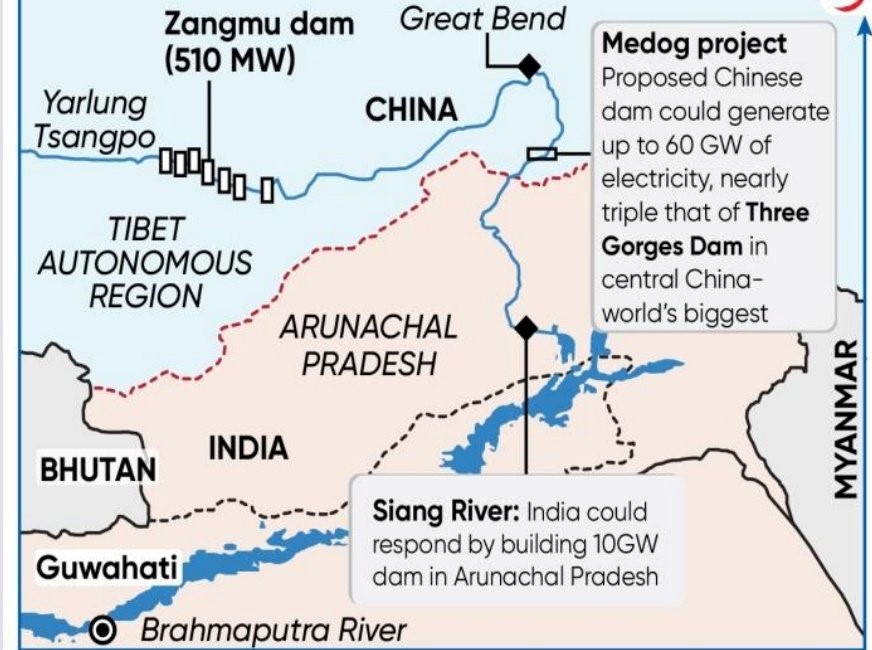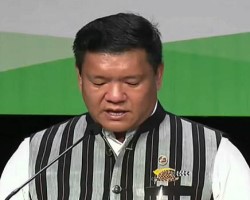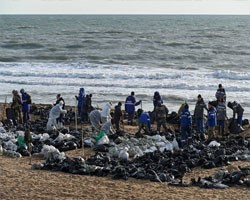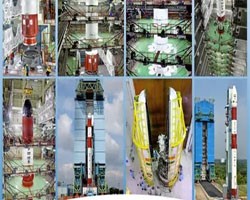Banking Current Affairs
TABLE OF CONTENTS |
| International Relations |
|---|
|
|
|
Source: PTI
Arunachal Pradesh Chief Minister Pema Khandu highlighted the importance of the Siang Upper Multipurpose Project (SUMP) as a strategic initiative by the Indian government to mitigate flood risks and maintain the natural flow of the river. Key Highlights: SUMP Details: Estimated cost: ₹1.13 lakh crore. Installed capacity: 11,000 MW. Objectives: Primary focus on preventing floods and maintaining the river's flow; electricity generation is secondary. China’s Dam Construction: China is constructing the world’s largest dam at a cost of $137 billion on the Brahmaputra River in Tibet, near the Indian border. The dam’s location is a gorge in the Himalayan region, where the river takes a U-turn to flow into Arunachal Pradesh and then into Bangladesh. Flood Mitigation: SUMP aims to protect downstream regions from potential flood risks caused by excess water releases from China. The project would ensure communities relying on the Siang River are safeguarded from drastic changes in water flow. Local Concerns: The project faces opposition from local communities over displacement, livelihood loss, and environmental impacts. Pre-feasibility surveys for the project are yet to be completed. Strategic Importance: The project is considered critical for national security and disaster management. India views SUMP as a counter to China’s plans of diverting the Brahmaputra River’s water to its arid regions, which could significantly reduce the Siang River’s flow during winters. |
|
|
|
About Siang River:
The Tsangpo, which originates in China, is called the Siang after it enters India through the Upper Siang district in the northeastern state. The Siang joins two other rivers – the Lohit and the Dibang – downstream to form the Brahmaputra. 
|
|
|
|
Context
In a severe environmental crisis, Russia has declared a federal-level emergency in response to a catastrophic oil spill along the Black Sea coast. The spill, caused by damaged oil tankers during a storm, has led to widespread pollution, affecting marine ecosystems, local communities, and the coastal economy. Timeline of the Disaster The Spill Incident: On December 15, two Russian-flagged oil tankers were damaged near the Kerch Strait during a storm. Thousands of tons of heavy fuel oil (mazut) spilled into the Black Sea, polluting 55 kilometers (34 miles) of coastline. Escalation of the Crisis: Initial cleanup efforts by local authorities were inadequate, prompting the Krasnodar region to declare a regional state of emergency. Thousands of volunteers joined the cleanup, but the scale of pollution required federal intervention. Federal-Level Emergency Declared: On December 21, Russia’s Emergency Situations Minister, Alexander Kurenkov, declared a federal-level emergency to allocate resources and funds for intensified cleanup operations. Environmental Impact Extent of Pollution: 200,000 tons of soil along the Black Sea coast have been contaminated with heavy fuel oil. The spill has caused severe damage to marine life and ecosystems. Affected Communities: Coastal areas face high levels of oil pollution, impacting tourism-dependent economies. Beaches and waters may remain unsafe, deterring tourists during spring and summer seasons, leading to long-term economic consequences. Government Response Emergency Measures: Federal emergency declaration allows: Mobilization of resources from the federal budget. Deployment of specialized equipment and personnel. Coordination between local, regional, and federal agencies to expedite cleanup. Criticism of Initial Efforts: Local residents criticized the response as disorganized and under-resourced, exacerbating the disaster’s impact. Expert Warnings Environmental Impact: Long-term contamination of soil and water could render the region uninhabitable for humans and wildlife. Marine life and ecosystems may suffer irreversible damage. Economic Repercussions: Tourism, a key economic driver for the region, may suffer significant losses as beaches remain polluted. Challenges Ahead Cleanup Operations: Removing heavy fuel oil like mazut requires advanced technology and expertise. Emergency workers and volunteers face health risks due to prolonged exposure to toxic substances. Restoration of Ecosystems: Long-term rehabilitation of marine and coastal ecosystems is essential. Monitoring and research will be necessary to track recovery and implement preventive measures. Conclusion The Black Sea oil spill is a stark reminder of the environmental and economic risks associated with oil transportation. Russia’s federal-level response underscores the urgency of addressing such crises with advanced technologies and coordinated efforts. Restoring ecosystems and rebuilding community livelihoods will require sustained commitment and international expertise. Source: The Hindu |
| Science and Technology |
|
|
|
Context:
India’s space program is set to achieve another milestone as the Indian Space Research Organisation (ISRO) launches the PSLV C60/SpaDeX mission to demonstrate in-space docking technology, a critical step for future interplanetary and satellite servicing missions. Space Docking Experiment (SpaDeX) Overview: The mission will demonstrate space docking technology using two small satellites, Chaser (SDX01) and Target (SDX02), which will attempt docking in early January 2025. This experiment is essential for developing capabilities in spacecraft rendezvous, docking, and undocking, paving the way for advanced space missions. Significance: SpaDeX marks a significant step toward futuristic space endeavors such as: Satellite servicing (e.g., repairing or refueling satellites in orbit). Space station operations (e.g., constructing and maintaining an Indian space station). Interplanetary missions (e.g., sample return from the Moon and sending Indian astronauts to the Moon). Mission Details Launch Vehicle: Polar Satellite Launch Vehicle (PSLV-C60). Launch Time and Location: 9:58 p.m., December 30, 2024, from the Satish Dhawan Space Centre, Sriharikota. Payload: Two small satellites weighing 220 kg each, deployed into a 470-km circular orbit with a 55-degree inclination. Docking Process Deployment: SDX02 (Target) will separate 15 minutes after launch. SDX01 (Chaser) will separate a few seconds later. Inter-Satellite Separation: The launch vehicle will provide a small incremental velocity to establish a 10-20 km distance between the satellites within a day. Drift Arrest Manoeuvre: Using its propulsion system, the Target spacecraft will stabilize in orbit with respect to the Chaser. Far Rendezvous and Approach: The Chaser will gradually approach the Target in stages, reducing inter-satellite distances incrementally. Docking: Final docking of the two spacecraft is expected in the first week of January 2025. Features of SpaDeX Technological Advancements: Demonstrates precise orbital maneuvers and velocity adjustments for inter-satellite operations. Critical for modular spacecraft design and space station assembly. Payload: Includes 24 PS4-Orbital Experiment Module payloads for scientific experiments. Significance of SpaDeX Future Space Missions: Enables critical technologies for India’s ambitious space projects, including manned lunar missions and building an Indian space station. Global Competitiveness: Positions India as a significant player in space exploration, capable of undertaking complex interplanetary missions. Technological Leadership: Advances capabilities in docking, a challenging technology mastered by only a few nations. Challenges Precision Maneuvers: Accurate deployment and velocity adjustments require advanced control systems. Orbital Dynamics: Synchronizing the orbits of two spacecraft with minimal error is highly complex. Reliability: Ensuring the docking mechanism performs flawlessly in space conditions. Conclusion The SpaDeX mission represents a crucial milestone in ISRO’s journey to enhance India’s space capabilities. By mastering space docking technology, ISRO is paving the way for more sophisticated missions, reaffirming India’s position as a leader in the global space community. Source: The Hindu |
|
|
|
Useful information for all competitive exams:
Indian Space Research Organisation (ISRO): Formed: 15 August 1969 Preceding agency: INCOSPAR (1962–1969) Headquarters: Bengaluru, Karnataka Chairman: S. Somanath (10th Chairman of the Indian Space Research Organisation) Primary spaceports: Satish Dhawan Space Centre, Thumba Equatorial Rocket Launching Station, Kulasekarapattinam Spaceport |
| Sports |
|
|
|
Source: The Hindu
India's dominance in chess continues in 2024 as Koneru Humpy clinched the women's World Rapid Chess Championship in New York, marking her second world rapid title. Koneru Humpy won her first World Rapid Chess Championship title in 2019, held in Moscow, Russia, by defeating Lei Tingjie of China. Key Highlights: Historic Win: The 37-year-old from Vijayawada secured 8.5 points from 11 rounds, winning her final round against Indonesia’s Irene Sukandar to emerge as the outright champion. Chess Achievements: This is Humpy's second World Rapid Chess title, with her previous win coming five years ago. India’s D. Gukesh also won the World Championship Trophy earlier this month in Singapore. In September, India’s men's and women's teams triumphed at the Chess Olympiad in Budapest. Other Performances: Indian Women’s Standings: D. Harika tied for second but was placed fifth after tie-breaks. Divya Deshmukh (21st), Padmini Rout (26th), R. Vaishali (52nd), and Vantika Agrawal (67th) showcased notable performances. Open Section: Arjun Erigaisi, despite starting as a joint leader, finished fifth with nine points. R. Praggnanandhaa (17th), Arvindh Chithambaram (40th), V. Pranav (44th), and Raunak Sadhwani (55th) also competed. Global Standings: Open Event Champion: Russia’s Volodar Murzin won with 10 points from 13 rounds. Top Finishers: Russian players dominated the Open section with Alexander Grischuk and Ian Nepomniachtchi completing the top three. Significance: Koneru Humpy’s victory underscores India’s growing strength in global chess competitions. This win adds to India’s impressive 2024 chess achievements, reinforcing the country’s prominence in the sport. Way Forward: India’s continued investments in chess infrastructure and training are paving the way for future champions. With the rise of young talents like Gukesh and Praggnanandhaa, the future of Indian chess looks promising. |
|
|
|
Men's World Rapid Chess Championship 2024:
Details About Volodar Murzin: Country: Russia Event Location: Volodar Murzin won the 2024 World Rapid Chess Championship in New York, USA. Runner-up: The runners-up were Alexander Grischuk (Russia) and Ian Nepomniachtchi (Russia), both scoring 9.5 points. However, Murzin claimed the title with a superior score of 10 points from 13 rounds. |
| Persons in News |
|
|
|
Georgia’s political tensions have intensified with the inauguration of Mikhail Kavelashvili, a far-right loyalist of the governing party, as the country's new President. The event has deepened the existing political crisis, as former President Salome Zurabishvili, known for her pro-European Union (EU) stance, declared herself the “only legitimate President” of Georgia.
Key Highlights The Inauguration: Mikhail Kavelashvili, aligned with Georgia’s ruling far-right party, officially assumed the role of President. The event marked a turning point in Georgia’s ongoing political turmoil. Opposition from Salome Zurabishvili: Zurabishvili, Georgia’s pro-EU former President, has openly challenged Kavelashvili’s presidency, claiming legitimacy as the rightful leader. Her declaration comes amid heightened pro-EU sentiment and large-scale demonstrations advocating closer ties with the European Union. |
| Banking |
|
|
|
Context
In a significant development to enhance digital payment flexibility, the Reserve Bank of India (RBI) has permitted full-KYC prepaid payment instrument (PPI) holders to make and receive Unified Payments Interface (UPI) payments through third-party mobile applications. This move, announced in a circular on December 27, aims to bridge the gap between PPIs and UPI platforms, offering more convenience to users. Key Highlights of the Circular Linking PPIs with UPI Handles: PPI issuers can now allow holders of full-KYC PPIs to link their PPIs to their UPI handles. Transactions will be pre-approved before being processed on the UPI system, ensuring enhanced security. Authentication Process: UPI transactions initiated from a PPI issuer’s app will be authenticated using the customer’s existing PPI credentials. Restrictions on Onboarding: A PPI issuer cannot onboard customers of any bank or another PPI issuer, ensuring focused facilitation of payments through their issued instruments. What This Means for Users Greater Flexibility: PPI holders, including users of gift cards, metro rail cards, and digital wallets, can now make and receive UPI payments using third-party UPI apps. Previously, UPI transactions for PPIs were restricted to the issuer’s app. Equity with Bank Accounts: With this provision, PPI holders enjoy similar transactional flexibility as bank account holders on UPI platforms. Improved Interoperability: By allowing third-party apps to process PPI-based UPI transactions, the system fosters greater integration between financial instruments. Background and Development Earlier Scenario: UPI payments could be carried out from/to a bank account using the bank's app or third-party UPI apps. However, PPI-linked UPI payments were restricted to the app provided by the PPI issuer. RBI’s April Proposal: In April, the RBI proposed the integration of PPIs with third-party UPI apps to promote flexibility and enhance user experience. Current Implementation: The new circular formalizes this integration, extending UPI capabilities to PPI holders through third-party apps. About UPI and PPIs UPI: India’s premier digital payment platform, UPI, facilitates instant inter-bank transactions via mobile phones. It is managed by the National Payments Corporation of India (NPCI). PPIs: Prepaid Payment Instruments are tools for purchasing goods and services, conducting financial transactions, and remittances. These include gift cards, metro rail cards, and digital wallets, backed by stored value. Significance of the Move Enhanced User Convenience: Expands the usability of PPIs for everyday transactions. Boost to Digital Payments Ecosystem: Strengthens UPI’s role as India’s leading real-time payment platform. Financial Inclusion: Promotes the adoption of digital financial services across a broader segment of the population. Conclusion The RBI’s decision to enable UPI payments for PPI holders via third-party apps is a progressive step towards a more inclusive and flexible digital payments ecosystem. This move aligns with India’s vision to promote a cashless economy, empowering users with seamless and secure payment options. Source: RBI Circular |
|
<< 29-Dec-24
|
|
|





